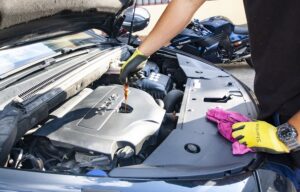
How do you know when you need an oil change?
Car owners are normally concerned about the performance and health of their car. The smallest and most common factors contribute to the safety and optimum performance of an engine. Therefore, it is recommended that every car owner has some basic information about engine oil to ensure the long life of engines.
Most car owners only consider mileage for an oil change. However, there are many other factors that can trigger a premature engine oil change. We’ll discuss these things below that can help you as a car owner schedule your next appointment at the right time.
What is emptying?
Oil, in general, is a lubricating agent, motor oil, in particular, is necessary for the engine to keep engine parts cooler and lubricated to reduce friction. Oil tends to lose its lubricating and engine cooling attributes after some time. The main reasons for this are:
Contaminant buildup
During daily engine operation, contaminants begin to build up in the oil. Motor oil is intended to combat the remnants of combustion, including carbon, acids and soot. Contamination over a period of time can reduce key engine oil properties, such as purity and viscosity.
Exhaustion of oil additives
Engine oils are mixed with additives that make them more efficient (be careful to respect the dosages because too much gasoline engine oil is not good). Depletion of additives leads to oxidation, corrosion and engine wear. It is therefore recommended by engine oil manufacturers to change the oil after driving a certain distance or according to a certain period of time.
DIRTY AND BLACK OIL
Engine oil is amber. After a while, the oil begins to take on a dark color due to dirt accumulating inside the engine. The darker color of the oil also indicates a decrease in viscosity and an increase in density or thickening.
DIRTY OIL
The best way to tell when engine oil color is turning is to check the condition of the oil twice a month or after each time you fill up. The best way to do this is to remove the dipstick from the engine, wipe it clean, and reinstall it. When you remove it again and the oil shows a sign of darkening and thickening, the oil should be changed.
SMOKE FROM EXHAUST GASES
In cold weather, it is normal for the engine to produce translucent smoke. It is basically the hot air coming from the exhaust pipe which mixes with the atmosphere and produces a vapor. It can also be the result of condensation from moisture that may have collected in the exhaust system overnight.
If there is noticeable smoke from the exhaust, there is an oil leak and the engine oil level should be checked by the dipstick. If the amount of engine oil is sufficient, the problem may lie in the engine and should be properly diagnosed by a professional.
The emission of black and blue colored smoke can mean a weaker engine, but several other factors can also contribute. Therefore, a proper diagnosis is necessary.
KNOCKING NOISE AND ENGINE NOISE
When metal rubs against metal, it creates friction, which generates heat and wears out engine parts. Engine oil keeps metal lubricated and creates a protective layer between engine parts that eliminates friction. When the fluid deteriorates, lubrication is no longer carried out and the engine noise is louder.
Over longer periods of time, the noise can turn into a knock and even a roar to let you know your engine needs an oil change as soon as possible.
CHECK ENGINE LIGHT
Turning on the check engine light in the dashboard indicates that the oil level in the engine is below the optimum level. The oil level should be checked immediately using the dipstick. If the dipstick indicates a low amount of oil in the engine, you should have the oil changed immediately.
Some vehicles have the ability to indicate by the warning light that the engine is likely to be damaged and corrective action should be taken immediately.


